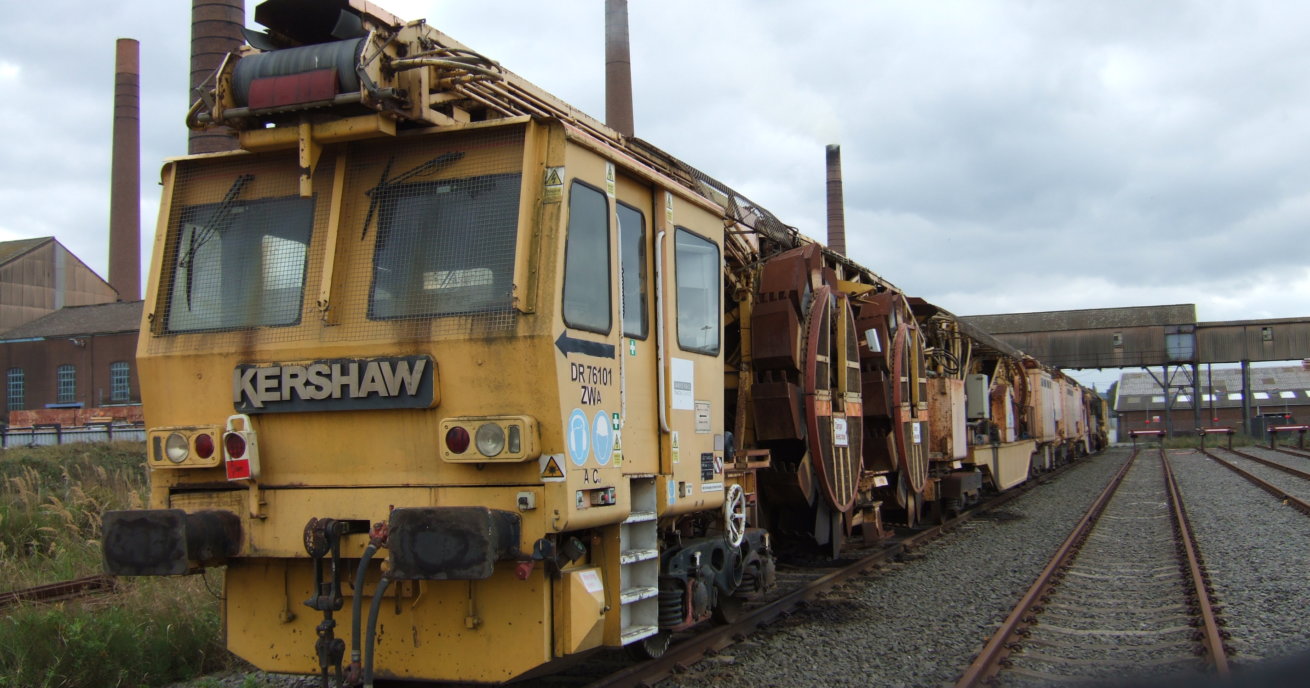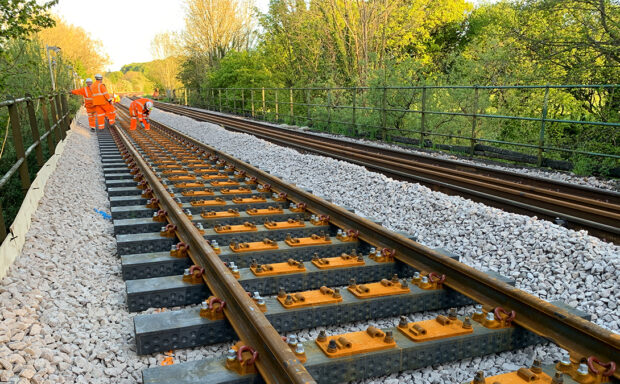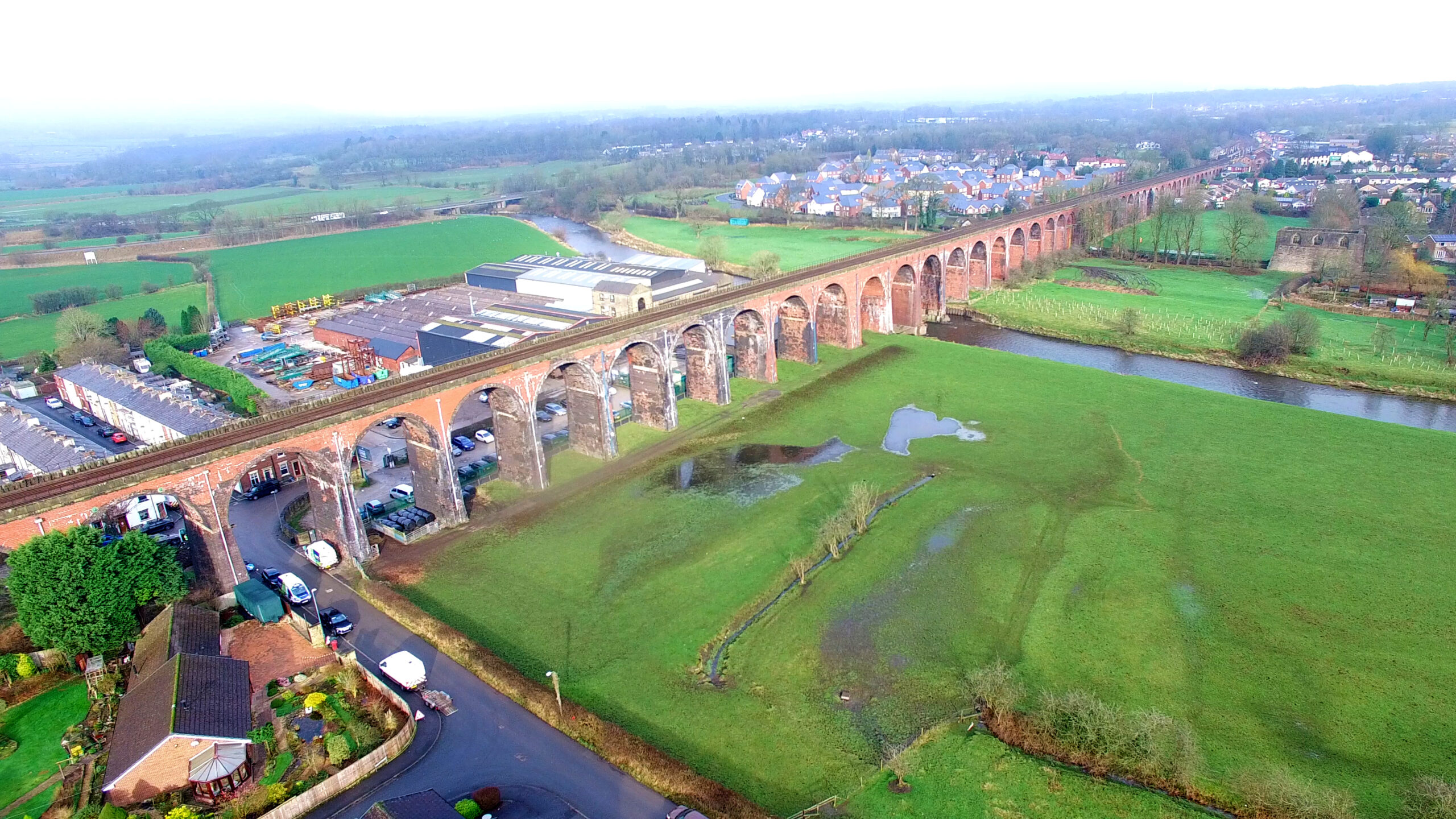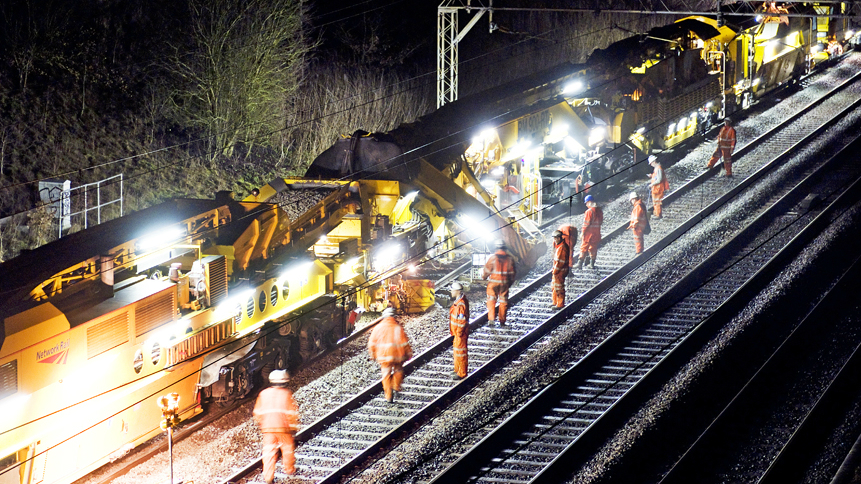Ballast cleaning has been a cornerstone of railway maintenance for 50 years, but the Kershaw machine’s 1993 outing marked a milestone in the story of railway renewals
Today, ballast cleaning is a slick operation, part of the High Output team’s schedule of rapid renewals work that replaces up to a mile of ballast every night.
Modern ballast cleaning in Britain allows trains to run on the railway at high speeds of 90mph typically or in some cases up to 125mph straight after core work, whereas in the past trains would run at slower speeds than usual for a week or so to allow the track to settle. Faster handback speeds mean little or no delay for passengers.
It has taken many years and experimental approaches to reach the current High Output way of working. Today’s approach is a collaborative effort – from planning to logistics and delivery of the ballast cleaning operation, which are owned and maintained by Network Rail.
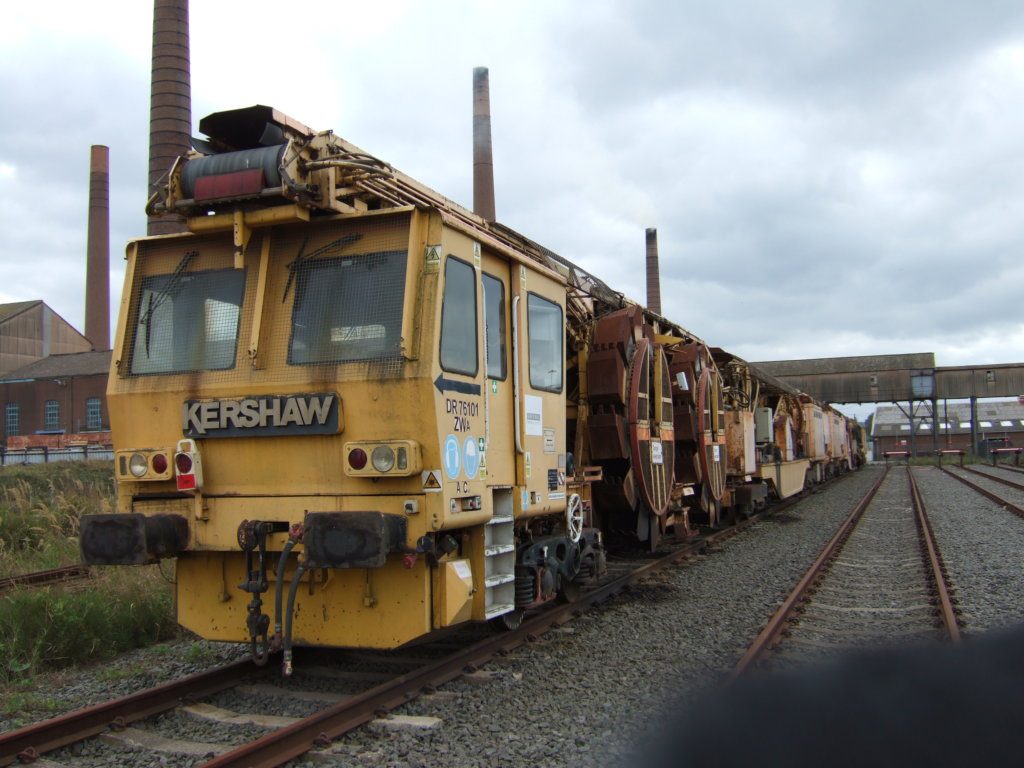
Ballast cleaning is a 24-hour cycle, from getting the systems ready in the operations bases, to preparing the track by removing lineside equipment (and putting it back afterwards), preparing machines for full production and bringing back the old materials for recycling.
Experimental technology
When the Kershaw ballast cleaner was introduced to Britain, carrying out its first shift in Rugby on Saturday 22 May 1993, it represented one of these experimental milestones along the path to where we are today.
Ballast cleaning started in Britain in the 1950s. At the time, ballast cleaners weren’t self-propelled. As can be seen from how the machines developed over the following years, this was far from the only difference between then and now.
The next generation of ballast cleaner in Britain, the RM74, running from 1978 until the early 2000s, still needed separate wagons to bring new ballast and take away the old (spoil). The open wagons for the spoil sat parallel to the ballast cleaner, on a separate line, or in many cases spoil was tipped lineside.
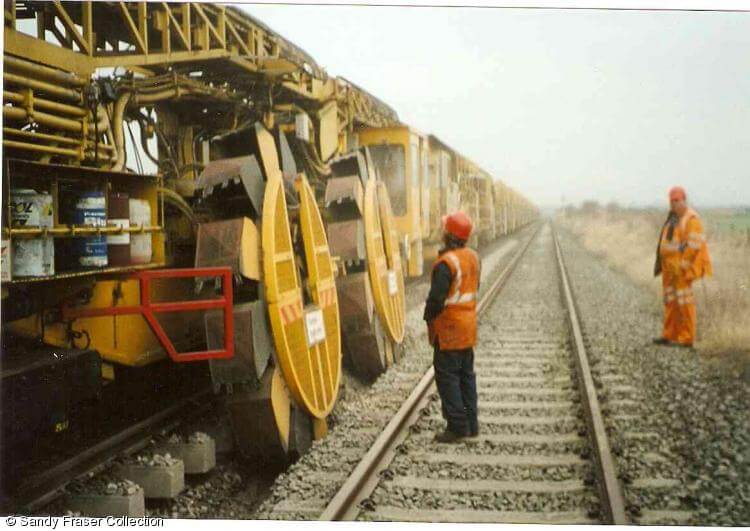
Adjacent railway lines therefore had to be closed for ballast cleaning jobs, which typically took around 16 to 30 hours per shift and so were disruptive to train services.
Ballast cleaning operated as part of the conventional renewals programme at this time – not the dedicated High Output team we have today. Trains were only able to travel at 50mph on the railway for a time after the work, to allow the track to settle.
The difference with the Kershaw cleaner, which came next, was its larger size and faster speed. Crucially, it was also the first time that teams experimented with a self-contained single line operation in Britain – including the cleaner and the wagons for the ballast and the spoil running in series (on one track) rather than parallel (on an adjacent line).
While the Kershaw didn’t always work in this way, these initial experiments paved the way for later designs that made ballast cleaning less disruptive and more efficient.
Ian Hindle, rail fleet support engineer for Network Rail’s Route Services South, based at Tonbridge, worked on the Kershaw ballast cleaner for six years. As can happen with new and experimental technology, the Kershaw cleaner’s first shift didn’t go without a hitch, as Ian remembers.
We have also transformed safety processes since 1993. Team Orange now wears air-fed masks while operating the ballast cleaner, to protect against ballast dust, and safety guards are now fitted to the machines, to keep people away from moving parts. Today, our approach to safety is also much more considered in general.
Latest models
The aims of streamlining ballast cleaning – to keep the railway line next to the ballast cleaner open while it works, allowing trains to pass – and increasing the capacity of the work that can be carried out, have influenced the development of the machines and the teams and processes involved.
The RM95 cleaner, for example, debuted in 2001 to support large volumes of renewals for the West Coast Mainline upgrade.
Other objectives that led to the development of the modern High Output ballast cleaning process and the RM900 model in use today – since 2003 – were to achieve routine handbacks of 80mph and to work in shorter, eight-hour midweek blocks as well as making use of weekend access.
Today, it’s possible for trains to run at full line speed (125mph) straight after ballast renewals work thanks to the Dynamic Track Stabiliser built within our tamping machines. This is integral to the consolidation machines that operate as part of the two newest ballast cleaners in our fleet: BCS 4 and BCS5.
Always forward-looking and focused on improvement, High Output’s culture of innovation is perhaps inherited from ballast cleaning’s history in Britain.
